Hard to know exactly what is going on, but here is my best guess. I have created this 3x2 sheet in Excel to mimic yours:

I then saved it into R by loading the readxl package to load the sheet, saved it as a data frame, then ran the sum on the Amount variable:
# Load library for excel functions:
library(readxl)
# Save excel sheet into data frame:
df <- read_excel("slack.xlsx")
# Run sum of Amount:
sum(df$Amount)
Which gives you the sum below:
> sum(df$Amount)
[1] 352.84
Edit
Based off your comment below, you can summarize your CheckDate values with the following code:
library(tidyverse)
reconstruct %>%
mutate(CheckDate = as.character(CheckDate)) %>%
group_by(CheckDate) %>%
summarise(Total = sum(Amount))
Which gives you these summarized values by date:
# A tibble: 6 x 2
CheckDate Total
<chr> <dbl>
1 2020-10-15 2800
2 2020-10-16 1500
3 2020-10-17 1000
4 2020-10-19 3600
5 2020-10-20 2450
6 2020-10-21 1700
To graph these, you can use the following basic code, which just adds the ggplot and geombar commands:
reconstruct %>%
mutate(CheckDate = as.character(CheckDate)) %>%
group_by(CheckDate) %>%
summarise(Total = sum(Amount)) %>%
ggplot(aes(x=CheckDate,
weight=Total))+
geom_bar()

If you want it to be a little fancier, you can also use this:
reconstruct %>%
mutate(CheckDate = as.character(CheckDate)) %>%
group_by(CheckDate) %>%
summarise(Total = sum(Amount)) %>%
ggplot(aes(x=CheckDate,
weight=Total,
fill = CheckDate))+
geom_bar()+
theme_bw()+
labs(title = "Check by Date Bar Graph",
x = "Date of Check",
y = "Total Amount",
caption = "*Data obtained from StackOverflow.")+
theme(legend.position = "none",
plot.title = element_text(face = "bold"),
plot.caption = element_text(face = "italic"))+
scale_fill_hue(l=40, c=35)
Which gives you something a little more colorful:




Where(XmasFund$CheckDate >=10/1/2022 and XmasFund$CheckDate <=12/31/2022) but get Error: unexpected symbol in "Where(XmasFund$CheckDate >=10/1/2022 and" and don't know what to try next. – Bryan Schmidt Mar 19 '22 at 20:29